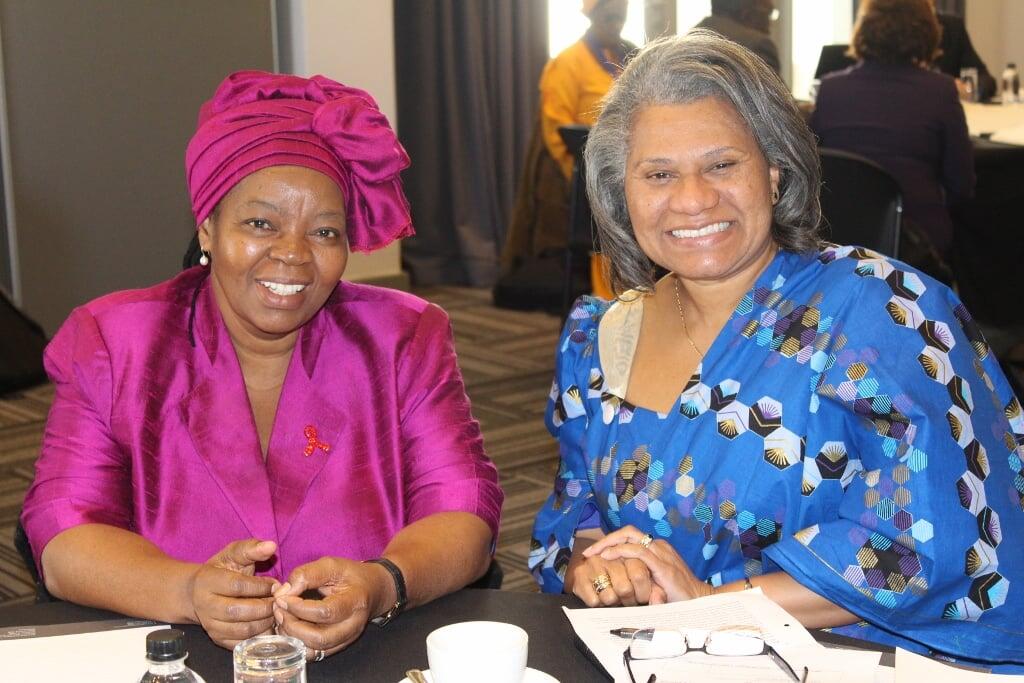
PRESS RELEASE
Regional Think Tank on Revitalizing HIV Prevention in the East and Southern African (ESA) region
5 August 2015
A new regional task team is to be established to drive the response to HIV prevention in East and Southern Africa, the region at the epicentre of the global epidemic. This task team will determine the concrete actions required to move the HIV prevention agenda forward in the region, to make a major contribution to the global effort to end HIV by 2030.
The decision to establish the regional task team was taken at a Regional Think Tank Meeting on HIV Prevention on Revitalizing HIV Prevention in the East and Southern African (ESA) region, held in Johannesburg on 4 August.
The task team is to take on the responsibility of advocacy, providing guidance and technical assistance, and implementation of prevention programmes or pilots.
“HIV is the single largest cause of life-years lost – and 50 per cent of deaths in the region are in adolescents,” said Dr. Julitta Onabanjo, UNFPA Regional Director for East and Southern Africa. “Failure to invest in HIV prevention now will increase costs for treatment in the future,” she said.
“The Lancet Commission has emphasized that the global community needs to be serious about HIV prevention. Ending the HIV epidemic by 2030 means we need a new way of doing business. Our window of opportunity is now. And we need to make sure we do not lose momentum,” she said.
The region has seen successes in treatment and prevention of mother to child transmission (PMTCT) of HIV, said Prof. Sheila Tlou, UNAIDS Regional Director for ESA. “We are all advocates at different levels. To turn the tide we need to have a regional response to prevention, and we are making history here,” she said.
The Regional Joint UN Team on HIV for East and Southern Africa (RATESA) is to perform the function of the task team’s secretariat, which will ensure its inclusion at ICASA (International Conference on AIDS and STIs in Africa), so that countries are informed of its work in the region. It will then focus on the International AIDS Conference, she said.
The ESA region currently accounts for 50 per cent of the global HIV burden and 50 per cent of new HIV infections. HIV infection rates in some settings in the region are not declining. In fact, in ESA there are a large number of new infections in young women especially – around 4,300 per week.
At present, international and domestic financing for HIV prevention lag behind.
At the meeting, discussions were held on how to take HIV prevention in ESA forward in terms of political leadership; programmatic shifts; human and financial resources; coordination, implementation and accountability; and knowledge, research and innovation. What remains critical is to translate evidence into practice, and this requires focusing implementation on the local context. To do so will require a series of pilots to be conducted to ensure effective and impactful translation of evidence.
National and sub-national targets will drive the need for costed prevention planning, which will lead to localized implementation plans, followed by implementation, monitoring and evaluation. To do this effectively, it is necessary to have informed leadership and champions; sufficient data for plans, which should look at target populations, intervention packages and unit costs; and identification of who is accountable for prevention.
The aim of the meeting was to agree on HIV prevention priorities for the region, to identify strategies for implementation and scale-up the core set of highest proven interventions, and to decide on concrete next steps with key milestones for implementation of the revitalization of HIV prevention in the region, plus time frames. The event was co-convened by the United Nations Population Fund, the Joint United Nations Programme on HIV/AIDS (UNAIDS) and the World Bank. UN organizations represented included the WHO, UNICEF, UNODC, UN Women and UNESCO,
***
UNFPA, the United Nations Population Fund, is the lead UN agency for delivering a world where every pregnancy is wanted, every birth is safe, and every young person's potential is fulfilled. UNFPA East and Southern Africa (ESA) works in 23 countries in the region as a catalyst for change. Visit esaro.unfpa.org, ‘like’ UNFPA ESARO on Facebook and follow @UNFPA_ESARO on twitter.
The Joint United Nations Programme on HIV/AIDS (UNAIDS) leads and inspires the world to achieve its shared vision of zero new HIV infections, zero discrimination and zero AIDS-related deaths. UNAIDS unites the efforts of 11 UN organizations—UNHCR, UNICEF, WFP, UNDP, UNFPA, UNODC, UN Women, ILO, UNESCO, WHO and the World Bank—and works closely with global and national partners towards ending the AIDS epidemic by 2030. Learn more at unaids.org and connect with us on Facebook and Twitter.
For more information or any media inquiries, please contact:
Adebayo Fayoyin, Tel: +27 11 6035308; Cell: +27 79 5170320; fayoyin@unfpa.org
Jyothi Raja Nilambur Kovilakam, UNAIDS, Tel: +27 11 5196938; rajaj@unaids.org


